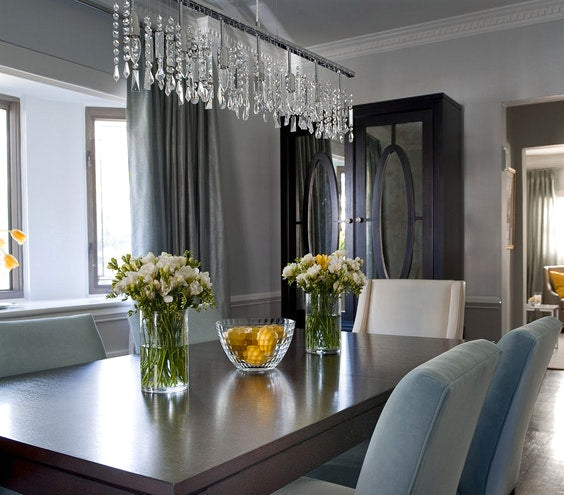
- Feb 24, 2020
- 0
Chandeliers are everywhere, but do you know why? Where did the concept of chandeliers even come from? Why do we have chandeliers in our homes? Here are some enlightening facts about crystal chandeliers.
What is a Chandelier? A chandelier is a light fixture that hangs from the ceiling. It usually has a minimum of three lights. The majority of household chandeliers have between 6 & nine lights.
Why do we call it a "chandelier"? The word chandelier comes from the French. They always had a flair for beautiful words, but the French word 'chandelabre' has its origins from the Latin word 'candelabrum', meaning candlestick. Which leads us to our next question?
How long have chandeliers been around? The byzantine polycandelon from the 6th century has the earliest discovery of what could be considered a 'chandelier'. Chandeliers have been found dating back to the Middle Ages, however, finding an authentic intact one is rare. Many were hung in churches that were destroyed in the 1500's. In fact, the first chandeliers were originally made of wood and held candles. Not the safest form of lighting a room. Which is why they started looking to making chandeliers out of different materials.
When did they stop using wooden chandeliers? While chandeliers were historically made from wood, they evolved. They began to be produced in brass, iron and other metals. Crystals and glass were added to reflect more candlelight in the room. This also created the need for 'bobeches' (another French word). A bobeche is a collar placed on a chandelier at the base of candle, to catch the drippings. Once chandeliers moved away from candlesticks, the practical need for a bobeche was altered to more of a ethestic purpose when the introduction of hanging crystals from the collar became the new design of choice.
When did chandeliers stop using candlelight? While there are still chandeliers that use candles as their light source (think along the lines of outdoor chandeliers or mood setting chandeliers) the majority of chandeliers were powered by gas in the 1800's and have more recently moved to electricity. While the light lumens increased and the additional help of adding crystals was no longer needed, the popularity of adding crystals to a chandelier become a popular choice among the elite.
Besides churches, who else had crystal chandeliers? Well, a century or two ago, just about anyone who was anyone important had a crystal chandelier or two in their home. The higher class, wealthy noble were the owners of such a exquisite expensive light. Now chandeliers are more common and are looked upon more as a decoration and add a feeling of luxury and luminescence to most homes.
When and why did crystals become a thing to add to chandeliers? The first record of adding rock crystals appeared around the 17th century. These were rare and hard to find. Not to mention, very expensive. So French glass makers started trying to replicate them with molded glass prisms. Then a british guy named Ravenscroft added lead to the glass and thus the crystal chandelier prism was born. It was brilliant, shiny and prismatic. It became widely popular and everyone loved the crystal chandelier.
Are there any famous or special chandeliers left in the world? The largest Bohemian crystal chandelier in existence today resides in the Dolmabahce Palace in Turkey. It is 4.5 tons and was a gift from the Queen (19 century) Not to be outdone, the largest Swarovski chandelier which the Sultan Qaboos Grand Mosque in Oman gazes upon is a mere 8 meters wide and 14 meters high. With more energy conscience lights available, the largest LED chandelier, know as the 'Reflective Flow' has 165,000 lights and weighs in at a whopping 39,683 pounds. It towers at 19 feet tall and 41 feet wide. Where is this monstrous chandelier? In Doho, Qatar at the atrium of Al Hitmi.
Now you know more than you thought you'd ever need to about chandeliers.

















